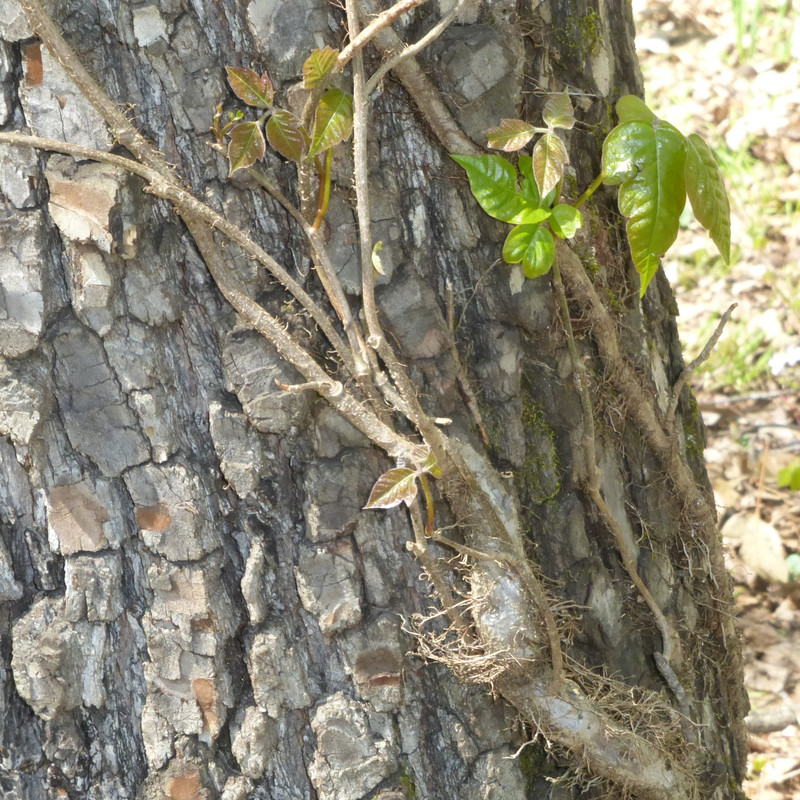Poison ivy
There is surprisingly little information on the web about this subject, considering the presence of the plant throughout much of the U.S. and, especially, the severe consequences to many people who blunder their way into exposure to the toxic oil the plant exudes (urushiol).
But there is enough info to familiarize yourself with the basic facts about the plant (toxicodendron radicans).
After several years of dealing with the plant and contemplation of it, there are a couple of tips I can offer.
For lasting removal, most experts recommend digging and pulling up the roots/runners. This is easier said than done, especially if your back tires from bending over a lot. The story is that if you leave even small root fragments, they will regrow. However, I have found that hacking up the roots using a grub hoe seems to retard, if not eliminate, regrowth. You just need to be sure to destroy any leaves that are still poking through.
One important step will, in my opinion, give the biggest return on effort: Locate the trees (or other structures) where the poison ivy has climbed and is producing berries. I call these the Queen Mothers. Some are very old, perhaps 30 years, and the vines are several inches thick. Birds eat the berries and shit the seeds out under trees throughout your property. You can cut the vine using loppers or a pruning saw and thus immediately kill all growth beyond the cut (up the tree). You have then put the Queen Mother out of business.
If you do not uproot the vine below, it will eventually sprout new growth. Here's one I cut, perhaps two years ago, where the fat, hairy vine ends. It is still not producing berries, though.

It would be irresponsible of me not to mention one important caveat: Never burn poison ivy! The smoke is harmful (as in blindness) and potentially deadly.